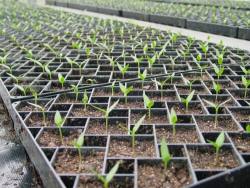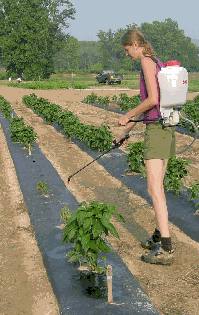Fertilizer From the Sea
go.ncsu.edu/readext?435049
en Español / em Português
El inglés es el idioma de control de esta página. En la medida en que haya algún conflicto entre la traducción al inglés y la traducción, el inglés prevalece.
Al hacer clic en el enlace de traducción se activa un servicio de traducción gratuito para convertir la página al español. Al igual que con cualquier traducción por Internet, la conversión no es sensible al contexto y puede que no traduzca el texto en su significado original. NC State Extension no garantiza la exactitud del texto traducido. Por favor, tenga en cuenta que algunas aplicaciones y/o servicios pueden no funcionar como se espera cuando se traducen.
Português
Inglês é o idioma de controle desta página. Na medida que haja algum conflito entre o texto original em Inglês e a tradução, o Inglês prevalece.
Ao clicar no link de tradução, um serviço gratuito de tradução será ativado para converter a página para o Português. Como em qualquer tradução pela internet, a conversão não é sensivel ao contexto e pode não ocorrer a tradução para o significado orginal. O serviço de Extensão da Carolina do Norte (NC State Extension) não garante a exatidão do texto traduzido. Por favor, observe que algumas funções ou serviços podem não funcionar como esperado após a tradução.
English
English is the controlling language of this page. To the extent there is any conflict between the English text and the translation, English controls.
Clicking on the translation link activates a free translation service to convert the page to Spanish. As with any Internet translation, the conversion is not context-sensitive and may not translate the text to its original meaning. NC State Extension does not guarantee the accuracy of the translated text. Please note that some applications and/or services may not function as expected when translated.
Collapse ▲Fish Emulsion and Seaweed Extract
Melissa Ann Pline Brown, Former Graduate Student, and Jeanine Davis, Ph.D., Advisor
Department of Horticultural Science
NC State University
4/29/2022 – Please note: this was part of a Master’s thesis project completed in 2004. It has not been updated. Access the thesis.
Snake Oil or Supplemental Fertilizer?Product claims:
|
Fish emulsions: 2-4-1 and Ca, Mg, S, Cl, and Na Seaweed extracts: 0-0-1 and minor nutrients Fish/Seaweed blends: 2-3-1
|
Germination
To investigate the claim that soaking seeds in sea products will increase seed germination, a germination study was conducted. Pepper and tomato seeds were soaked overnight in fish, seaweed, fish/seaweed, or water. As a control, some seeds were not soaked. There was no difference in germination rates between any of the treatments.
 Transplant Production
Transplant Production
Fish and seaweed products are commonly used as source of fertility in the production of organic transplants. Greenhouse studies were conducted to determine the optimal number of applications. Tomato and pepper transplants were grown in Winstrip flats and drenched with 1/2 oz/gallon of seaweed/fish either bi-weekly, weekly, or two times weekly. The controls received no applications. The preliminary studies showed the plants with the greatest heights and weights were those receiving the solution twice a week.
spraying plants
Foliar Fertilization
 Foliar fertilization is the application, via spraying, of nutrients to plant leaves and stems where they are absorbed into the plant through the cuticle. Greenhouse and field studies were conducted on sweet peppers. The peppers were sprayed bi-weekly with 1 oz/gallon of fish, seaweed, fish/seaweed, 20-20-20, or water. The field peppers with sprayed with a solar backpack until the liquid flowed off the leaves. Ratings and heights were taken weekly and peppers were harvested bi-weekly. After one harvest from the field, there were no significant differences in yield and grade of sweet peppers.
Foliar fertilization is the application, via spraying, of nutrients to plant leaves and stems where they are absorbed into the plant through the cuticle. Greenhouse and field studies were conducted on sweet peppers. The peppers were sprayed bi-weekly with 1 oz/gallon of fish, seaweed, fish/seaweed, 20-20-20, or water. The field peppers with sprayed with a solar backpack until the liquid flowed off the leaves. Ratings and heights were taken weekly and peppers were harvested bi-weekly. After one harvest from the field, there were no significant differences in yield and grade of sweet peppers.


